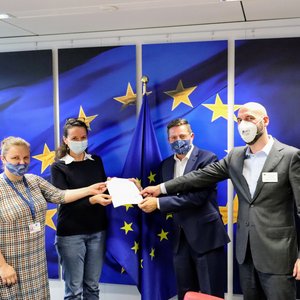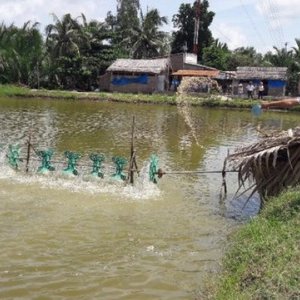A team of international researchers from Vikas Kumar’s Lab (University of Idaho) evaluated the effects of insect meal supplementation in diets containing a high soy protein inclusion in juvenile rainbow trout (Oncorhynchus mykiss).
A basal diet (Soy) with a high-level soy protein (21% soybean meal, SBM plus 4–5.5% soy protein concentrate, SPC) was compared to similarly formulated soy-based diets supplemented with low (8%) and high levels (16%) of insect meal for diet groups Soy + IM Low and Soy + IM High, respectively. A high-level fishmeal (24%) based positive control diet (Fishmeal) was also produced. All diets were iso-nitrogenous (44%) and isolipidic (20%) and were fed to triplicate groups of rainbow trout juveniles (initial weight 32 ± 0.0 g) over the course of a 10-week trial.
Fish fed the positive control diet showed significantly higher final weight, % weight gain (%WG) and specific growth rate (SGR) compared to the Soy + IM High and Soy diet groups, but these parameters were not significantly different from the Soy + IM Low diet group. The Soy and Soy + IM High diet groups showed significantly lower final weight, % WG and SGR. Feed efficiency and protein efficiency ratio was numerically higher in fish fed the Fishmeal positive control diet followed by the Soy + IM Low and Soy and Soy + IM High diet groups, respectively.
Among somatic indices, condition factor (CF) was significantly influenced by IM supplementation and the Soy + IM High diet group showed significantly lower CF compared to other dietary groups. The addition of insect meal significantly increased whole-body amino acids viz., arginine, histidine, valine and threonine content. Insect meal supplementation significantly increased muscle α-linolenic acid content. However, α-linolenic acid content in fish fed the Soy + IM High diet was not significantly different from fish fed the Fishmeal positive control diet. Insect meal supplementation did not significantly influence EPA + DHA, total n-3 PUFA and monounsaturated fatty acid content in the muscle, whereas the significantly highest EPA/DHA and total monounsaturated fatty acids were detected in the fishmeal based positive control diet compared to other dietary treatment.
The liver gene expression pattern for Δ5 desaturase was significantly higher in the Soy + IM Low diet fish, while Δ6 desaturase and fatty acid synthase (FAS) were significantly higher in Soy (basal) and Soy + IM Low diet fed fish. Elongase and fatty acid-binding protein (FABP) were not significantly influenced by insect meal supplementation. Regarding the antioxidant potential, Soy diet group showed significantly higher superoxide dismutase (SOD) activity compared to insect meal included groups and positive control diet group. Glutathione peroxidase (GPX) activity was significantly reduced in Soy + IM High diet compared to other dietary groups.
Researchers concluded that insect meal inclusion at a low level (8%) is beneficial for increased growth and select fatty acid restoration for rainbow trout-fed soy-based feeds.
Check out the study here.













